Summary/ Top 10 Key Take Aways
Background and Education: MK Chandrasekharan (MKC) shares his background, growing up in Delhi, his education in physics and operations research, and his early career in the fertilizer industry.
Transition to the IT Industry: MKC narrates how he transitioned from the fertilizer industry to the IT field when he was offered a job in the IT department of a fertilizer corporation in Mumbai, emphasizing the importance of seizing opportunities.
Innovative Problem Solving: He describes his innovative problem-solving and Systems Thinking approach in optimizing processes within the fertilizer plant, including developing models that resulted in significant cost savings.
Entry into Software Field: MKC discusses his entry into the software field when he joined CMC (Computer Maintenance Corporation), where he started as a data center manager.
Networking Pioneer: He highlights his role as a pioneer in networking in India, mentioning projects involving IBM SNA architecture and DEC PDP 11 systems, despite challenges with telecom infrastructure.
Demonstration of Networking Power: MKC recalls a significant achievement of successfully demonstrating networking capabilities to India’s then Prime Minister Rajiv Gandhi, showcasing interbank transactions and software development.
Contribution to National Medium Range Weather Forecasting: He shares his involvement in supporting medium-range weather forecasting models, which played a pioneering role in India's weather forecasting capabilities.
Quality Assurance and Project Management: MKC emphasizes the importance of quality assurance and project management in software development, reflecting on his experiences at CMC.
Continuous Learning and Adaptability: Throughout his career, MKC emphasizes the importance of continuous learning, adaptability, and curiosity in staying relevant in the rapidly evolving technology landscape.
Message for Young Professionals: MKC's message to young professionals emphasizes the value of hard work, sincerity, continuous learning, and authenticity in achieving success.
Full Transcript
Piyush: [00:00:00] Digital Agenda is all about data, analytics, cloud, AI/ML, and emerging technologies that are transforming not only companies, but also entire industries and even our lives. Hi, my name is Piyush Malik, a curious mind who wears and juggles multiple hats as an engineer, a management consultant, practitioner, a builder, a thought leader, entrepreneur, and a C-suite executive.I have been in the industry helping organizations realize and navigate the value of data, analytics, applied AI/ML, and emerging technologies. I have created strategies and transformation programs. That helps them compete with the digital natives.
[00:01:00] Our today's guest, MKC, is a PhD dropout and MSc from Delhi University. He also has a diploma in numerical analysis and automatic computing from IIT Delhi. And he has more than 50 years of IT and management experience spanning Strategy, general management, quantitative modeling, project management , Risk management, Quality, so and so forth. He was with CMC Limited where I first met him.
Today our guest is MK Chandrasekharan whom we lovingly used to call MKC in my CMC days. Of course, that goes long back, but before I go any further let's welcome MKC warmly. How are you doing?
MKC: Oh, first of all, thank you for inviting me and [00:02:00] I'm doing fine. Yeah, very nice to be face to face with you, at least on Zoom.
Piyush: Yes, yes, after a very, very long time. Why don't we, for the audience who don't know you - tell where were you born and how did we meet? f you want to share that story.
MKC: Yeah. I was born and brought up, educated in Delhi, Born in 1946 and my father was a government servant. So my early days were in government quarters in old Delhi. Then we shifted to New Delhi and all my school education. I started with Delhi Public School, Mathura Road and moved on to the DTEA school.
Finally, I passed my higher secondary out of DTEA. In between one year, [00:03:00] I had to study in Chandigarh. Punjabi
Piyush: Oh, my goodness. You can speak Punjabi too!.
MKC: So “Sanu Guru Mukhi Likhna padna aunda eh”.
(Says in an Indian dialect meaning I know to read and write Punjabi script)
Piyush: Oh, my goodness. Wow!
MKC: After that, I came back to the Tamil environment of DTEA. And I did my honors in physics from Delhi Delhi University, Hindu College.
I did my master's in operations research from the Hansraj College of Delhi University, and I did a post MSc diploma in numerical analysis from Delhi IIT, after which I had enrolled for a PhD program in mathematics. Now at that time, something very curious happened. The then chief industrial engineer of fertilizer corporation in Mumbai, [00:04:00] he was looking for some people to take charge of this I mean, to work in his IT department and he interviewed me sort of, he had actually come to deliver a lecture and on the sidelines, he just interviewed me.
He said, if you're interested, you may get a job in Fertilizer corporation in Mumbai. It'll be a - the so called Class One post and you'll get accommodation in Mumbai. So if you're interested, you can apply. He said, look, you have to fight on your own merits. I can only administratively help you. Get the forms filled and the formalities done etc.
So that's how, then I asked my father, what should I do? My father said, look, the three letters after your name namely the PhD may be a sort of a ego booster, [00:05:00] but God knows what use it will be. Whereas if you get into industry with your background of OR, you're likely to do much better. Yeah! So then my elder brothers also told me the same thing.
So I said, all right, let me go to Mumbai and begin my job. So I joined as a junior industrial engineer and I was responsible for bringing up the materials management system, the costing system, and also any kind of OR study or a quantitative study. The, the Chiefs industrial engineer later on got promoted as general manager, and finally, when the Janta government came to power in 1977, they reorganized all fertilizer companies and our fertilizer corporation, unit became Rashtriya chemicals [00:06:00] and fertilizers. (RCF)
And the gentleman, Mr. Dilip , became the chairman and managing director. So I was directly reporting to him on many of these assignments. Which was also a little bit difficult for me because I had at least two senior people to report to. And he directly used to call me on the intercom and give assignments to me.
Of course he would call my boss and say, Hey, by the way, I pinched MKC's time for something. So don't worry, he will do it. And I'm keeping a watch on it. Now this used to create a little bit of unhappiness with my (direct) bosses, but then what could I do? The only thing I could do was faithfully go and tell them what happened so that they wouldn't be missing out.
And a lot of things happened, you know, on the process optimization in one section of our ammonia plant, the steam consumption [00:07:00] was going up. Nobody knew the reason why. And the original equipment manufacturer also threw up his hands. He said, other than replacing the entire plant, I can't suggest anything. So a friend of mine in technical services and I, we said, we are not going to give up.
And he was a very good chemical engineer. And he needed some background from mathematics and quantitative quantification. So I worked with him, we developed a model. And as a result of the model - way back in 1979/80. We came up with a model that could result in savings to the extent of 10 lacks of Indian rupees.
And that was you know, every month there was a minimum saving of 10 lacks
Piyush: That’s a big amount in that time. Think about it!
MKC: Yes.
Piyush: Yes. 10 LAX in [00:08:00] 1980s per month. Yeah, that's huge.
MKC: And before that. It was another humorous thing. We had our departmental meeting. The first one I attended after joining. And my boss was talking about how the annual shutdowns are extending and the, you know, the maintenance was just stretching.
So we need to plan it better. And we need to cut down the loss of production. So I said, okay as a youngster, as a hot blood, I couldn't restrain myself. I said, why not? Look at PERT/CPM. They're very good. You asked for it. Then I realized without any computer software, without any computer help, the entire PERT chart had to be drawn on tracing paper & ammonia printed.
And then [00:09:00] that PERT chart would be used for following up and tracking the shutdown operations. And I was not the only one - there was a team of which I was a member. So together we achieved. Earlier the shutdown period used to be as bad as 30 to 45 days. We cut it down to just 10 days by this proper planning!
And this in war. My drawing, the whole PERT chart validating it. Sometimes engineers would forget to add a stream of activities. So the old PERT chart would go to the waste bin and new one would have to be prepared. And that is not the end of the story. In the nights. I had to go back to the plant and I had to supervise what is happening, whether it is going as per plan or not.
And I used to just wake up the general managers and works managers and so on, at whatever time in the night if there was any holdup.
[00:10:00] So that is the kind of thing and lot of things with costing system. It was all shambles because of lack of understanding by the accounts department.
So that whole system had to be streamlined and we had a wonderful system which reported the daily production as well as consumption of raw materials and it came up with a little profit and loss statement on a daily basis. Of course, in the month ends we used to correct some of the fixed cost figures and so on.
So otherwise, at a glance, it was, it was a pretty good approximate. Profit for the company. So those kinds of applications were developed.
[00:11:00] You will be sort of tickled to know that this was all done on an old IBM 1401 machine, where the auto code or the, the machine language, so to say it required six instructions to carry out a multiplication or a division.
So that was the kind of environment in which I developed the entire costing system, the materials management system, and it, finally became an ERP of sorts, except for the fact that we had to have a combination of punch cards and magnetic tapes. To integrate the information.
Piyush: Oh my goodness.! That's epic…let me unpack it for the audience especially younger audience who may not have even heard about magnetic tapes or a punch card.
So you essentially used your systems thinking to re-engineer the entire problem. You used to understand those problems and fix. You gave examples of the accounting system as well as the [00:12:00] chemical manufacturing plant situation where you went down to the root cause of the problem using management techniques, operational research techniques, quantitative techniques in that time with the primitive tools of that time and solve those problems to save your companies and your employer, a lot of money and improve efficiency.
So that's a perfect segue for us to move to the real computerization part (of your career) where you and I met back in our CMC days. So how was your entry into software field and how & what are the most complex projects that you oversaw there?
MKC: Well actually my career graph was going up very well actually in chemicals and fertilizers, but my father had a very severe health issue and he was in Delhi.
[00:13:00] I was in Mumbai and my brother in Delhi was finding it very difficult to manage him. I had to move to Delhi. Fortunately, CMC had an opening in Delhi and they were kind enough to interview me in Mumbai. And once I was selected, I was posted in Delhi. So I joined as a data center manager. And my initial job was just to make sure that the job scheduling, operator scheduling, and, you know, overall maintenance of the computer center was carried out.
Piyush: This was in which year?
MKC: This was in the year ‘85. And after that, it was… just you know, things started happening pretty fast along I mean, along with my duties as a computer center. There were some customer applications which are being run by us. We developed the software. We means my junior colleagues that developed the software and (together) we used [00:14:00] to run the job.
The customer used to get the data every month, get it processed and go. So that was the time when Dr. P P Gupta was the then chairman and managing director of CMC. He was a very good visionary. And he was the one who said we must start networking computers and we must explore the power of networks. So that was where he was coming from.
And there were other projects which required project management, basically. So my my portfolio was getting enhanced and I was one of the pioneers of networking in this country. In the sense, we started with the IBM and we had a PDP 11, so we got them into a hybrid network, [00:15:00] IBM SNA architecture and DEC PDP 11 system.
And at that point of time, we were having a lot of problems with the telephone lines, which we use for communication. None of the people in the in the telephone exchanges understood what is to be done. So they were all along telling us (excuses.) They used to do a tone test and tell me, “sir - you teach your computer to accept the signals.” That was the kind of situation and Strowger exchanges of all exchanges.
Piyush: I remember all during that period. I remember when this was, as I started my career in Telecom and Strouger exchanges to be replaced by EPABXs and PBXs. Telco Modernization - I've gone through, but this is very interesting. I did not know this aspect of your life. So please go ahead.
[00:16:00]MKC: So I, when I took over, even a trunk line, like Delhi - Mumbai line, it had just about 11 percent of uptime, 11%.
And we used to scratch our heads at this stage. No customer is going to buy this, buy any service from us. But we didn't give up. I went with Dr.Gupta and we met the secretary telecom. And he said, “sir, if this is the case,, we have to bid goodbye to the idea of networking”
But that was the time when Rajiv Gandhi was the PM and he wanted modernization. So the secretary said, “okay, you come to me directly if you want anything. And otherwise, the general manager of MPNL will have to be your points guy.And if it goes beyond him, you don't hesitate to come to me.”
Within a month, there are some 15, 20 line customer connectivity lines, the [00:17:00] last mile connections, which are pending. And earlier, these guys were lazily saying that these lines are not feasible. So after taking them to task, everything became okay and by the time I handed over my charge to the next person and I got promoted further.
By that time, the uptime had come up to 93 percent plus.
Piyush: Wow. Wow!
MKC: That was from 11 to 93%.
Piyush: And these were the copper lines, right? In those days, the last mile connectivity used to be the copper, not fiber optics.
MKC: Not fiber optics. And the other part of it was within the city, the intracity was even more horrible. Only 6 percent uptime. Around about that.
Piyush: Imagine packets going on the network and 94 percent of the time missing the messages, 94 percent is not getting through because of the uptime being only 6%.
[00:18:00] MKC: I, found I had to take over some of the exchanges. I had to go there, talk to the division, a divisional engineer, telephone, get his people together.
These guys were so lazy. They wouldn't use a wire wrapping tool. To tighten all the connections all and I insisted that they should do that and also I remember having walked with the lineman, climbing up all those telegraph poles, crawling under DP boxes too with a bit error rate tester - the old heavy ones - just to make sure that I got the bit error rates properly documented.
Piyush: Wow. And the digital transformation that you have done by yourself, real, real hands-on in, in those early days (of modernization of India with computerization and telecom transformation)
MKC: And to top it all, while these problems were getting sorted out, Dr. Gupta went and committed [00:19:00] to the PMO, the prime minister's office. That we will give a demo of networking power and he said we'll show an interbank kind of a transaction.
We would show software development. We would show use of a software package from some place. Data lying in some other place and the results being produced in a third place. We'll show you all this and Rajiv Gandhi was naturally, you know, when he heard about it, he said, “I want to see this.” And this happened on the 27th of April 1986.
And 27th of May was the date chosen monthly give a demo or just a month away. So I don't know how I did it, but I kept bugging the divisional engineers and some of the senior managers in DOT. [00:20:00] Somehow, on the day of the demo, we managed a demo from our South Extension office in Delhi, and it was a wonderful experience.
Not once did we have a glitch at the connectivity to Kolkata, Chennai, Mumbai, Hyderabad, and Delhi. So we showed all this, you know, there was a graphics kernel, which was there in Mumbai. We accessed that from Delhi. And the results are printed out in Kolkata. These kinds of things we show and Rajiv Gandhi was naturally very much impressed.
After that I was given charge of taking care of facilities management in the National Center for Medium Range Weather Forecasting, where we had the Cray XMP supercomputer.
Piyush: Yeah. Yeah!
MKC: So it was my boys who were giving the support there and that was coming under my overall charge.
[00:21:00] I mean, I said, you do whatever you want behind my back, but not in front of me.Then the equations are set, right. Programs were corrected. We integrated our graphics package and then the very next day we got wind vector diagram and other diagrams coming out of the processing. So the medium range weather forecasting models slowly started getting operationalized
Piyush: That's great!
And for the audience, especially from India, would remember Doordarshan TV showing the superimposition of these medium range forecasts behind the newscasters- weather newscasters. Yes. So that was like a pioneering moment. And of course, TV was new to India and getting these forecasting models, right.. So you played a role there.
It's great to know that. So, obviously lets talk about CMC and whatever limited time we've [00:22:00] got now. CMC. It was formed after IBM left India in 1977 and whatever was left to, to take care of the computerization of needs of India. And that was the only computer company in that time between 1977 and the time that we are talking about 86/87, after which a number of other startups like Infosys and others came up and TCS as well.
MKC: yeah,
Piyush: Talk about CMC and the TCS journey there please.
MKC: Yeah, that's actually I felt very, very sorry. When CMC was sold off, I thought .. I mean, Dr. Gupta's vision was very, very good and he had a lot of innovative ideas. In my CMC days,R&D was one of the bright spots.
Today, if you see, all this issue about data privacy, about [00:23:00] cyber security and so on, even the issue of deepfakes and so on, which is taking place. I would have liked an organization like CMC to sit with the legal experts and formulate the regulatory framework. You can't do a regulatory framework unless you know the technology.
Unless you know what can be done with it, what are the risks and so on. So that's what I would have liked to see. But unfortunately, the decision was made, CMC was sold off, and TCS today, I think it has totally disbanded CMC. You don't hear it.
Piyush: Ya, that's, that's pretty unfortunate,
For the audience - I worked for MKC back in my CMC days when he was heading up all the projects in Northern India for CMC and CMC used to be the public sector company who had a lot of projects going on for eg stock exchanges , for computerization of Indian [00:24:00] railways, where I cut my teeth in software at that time (pivoting ) from being a telecom engineer to a software engineer. That's where my personal transformation happened at CMC. And at that time, MKC was responsible for all the projects that were happening in the northern region.
MKC: And, quality assurance
Piyush: Yes, and quality assurance! as well I remember you, you had always had that quantitative mind and the few meetings that I was directly in with you. (Once) when we were evaluating some new software and we went together to, some ISV with one of my other colleagues and to a meeting and the piercing questions that you asked of the software vendor. And for me, it was my first official vendor/ISV meeting and we /CMC was a system integrator and we had to do the job of evaluating all the software vendors.
[00:25:00] And so I was obviously under training, just two years out of out of school and learning all the the, All the good stuff from, from you. So thank you for all of that, what, you did and what you taught me during that time. But please go ahead and talk about that TCS thing and lets come to the present - we have less than five minutes left now (in this session)
MKC: Yeah. So today technology is a sea change, but fortunately, because I've dabbled with machine language. So firmware and other concepts were not very difficult to grasp and today if you asked me to work on AI, I'm ready to roll up my sleeves and work. In between. I have been dabbling with Python and active programming just to -and I used spherical astronomy as my target area - just to get a hang of how things are working.
So that's, that's what is interesting me. In between after leaving CMC, I was with the private [00:26:00] sector and then I started doing my own consulting. I was a part of British Standards Institution in India. So I was a lead auditor and tutor for three, four standards. ICMS in security management system, business continuity management system, IT service management system and data privacy, including GDPR. So these are areas where I was conducting training as well as conducting audits. So in 2021, I finally said enough is enough. And now I do assignments on a selective basis and means things which I can do And things where you know, a person of my experience would be required.
Piyush: So guys, Its not easy to get all this experience. And you distill all that 50 years of experience [00:27:00] through your independent consulting opportunities, Hats off to you sir. Salute to you for this longevity in the industry. First the fertilizer industry and then the computing industry and, seeing a lot of transformational projects all along. And now even keeping up with the latest technologies- you talked about Python and machine learning that you are up to speed with.
What keeps you going? What keeps you continuously learning?
MKC: Curiosity. If there is something to be learned, Simply learn it!
Piyush: Beautiful, beautiful. Great! Such a wonderful conversation.
(Finally) Is there a message for the younger audience out there who would take your life story and the experiences and want to distill it?
[00:28:00] Would you like to say some message for the young folks?
MKC: Yeah. If you're put into a position where you have to work very hard, consider yourself lucky because you will get that much more opportunity to learn. Never be shy of learning and be true to yourself. You don't understand, try to find the answers. But never try to pose or never try to cover up ignorance by putting up some artificial show.
You'll be caught out. So if you work sincerely, the first satisfaction will come at the self level and that will translate into successes elsewhere.
Piyush: Wonderful, MKC. This is an amazing message and thank you very much for taking the time. I know it's pretty late at night for you and you are in India. I'm here in the US. But thank you for taking the time. Let's stay in touch and from the bottom of my heart, from my [00:29:00] soul to you, thank you. And thank you for being a mentor to me in my early software days and continuing to be in my life. Thank you so much. Appreciate you being here.
MKC: Most, most welcome. Thank you. And thanks to all the viewers who will be watching this. I wish everyone all the very best and have a very positive outlook is what I would say.
(BTW)I have also been dabbling with psychology, cognitive psychology and hypnosis, and I can tell you that if you know how to get in touch with your subconscious, you can achieve anything.
Piyush: Wow, that's like programming the mind.
So from programming computers to programming the mind, that's your own personal transformation and you are helping others in the, in the process. So I'm sure we will have to have another conversation on this, but for now, let's say goodbye to our audience for today's episode. So thank you again, [00:30:00] MKC, and we will stay in touch. Good night.
MKC: Thank you. Bye. Bye. Bye.









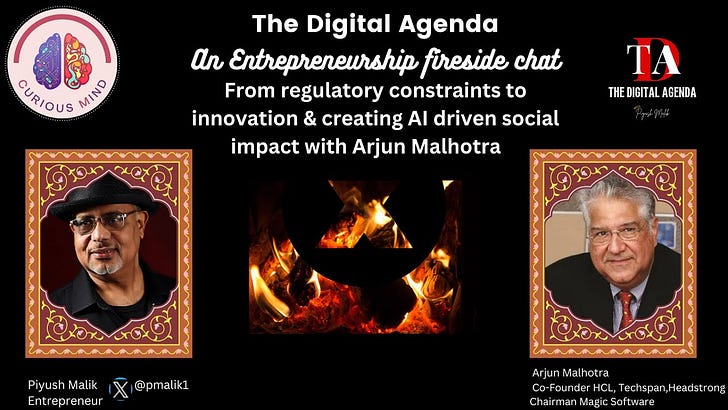
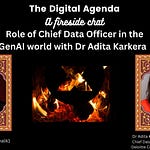
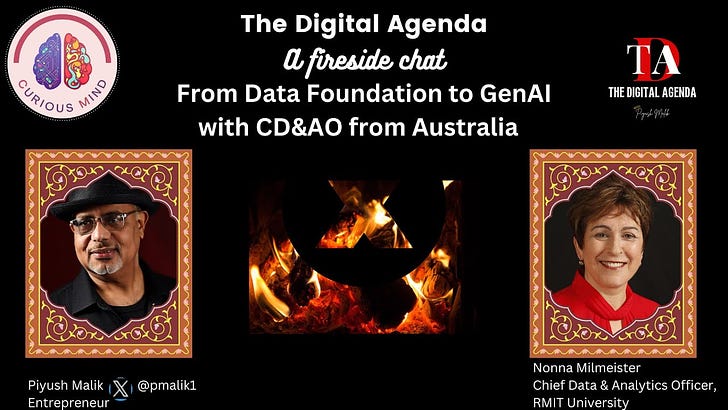
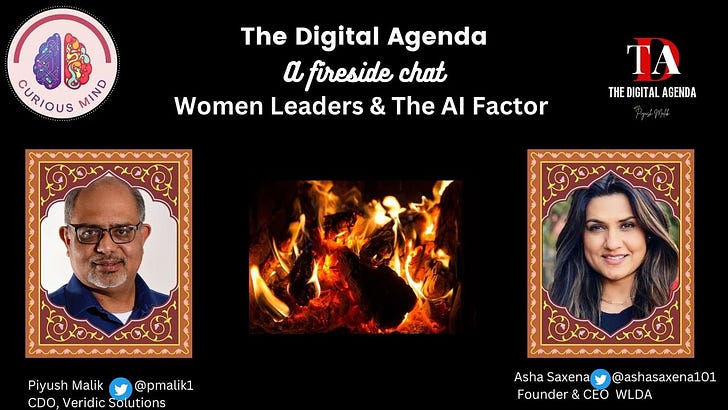
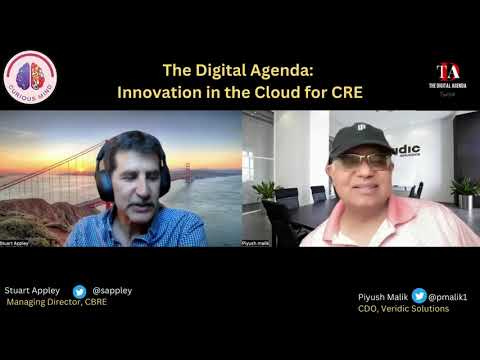
Share this post